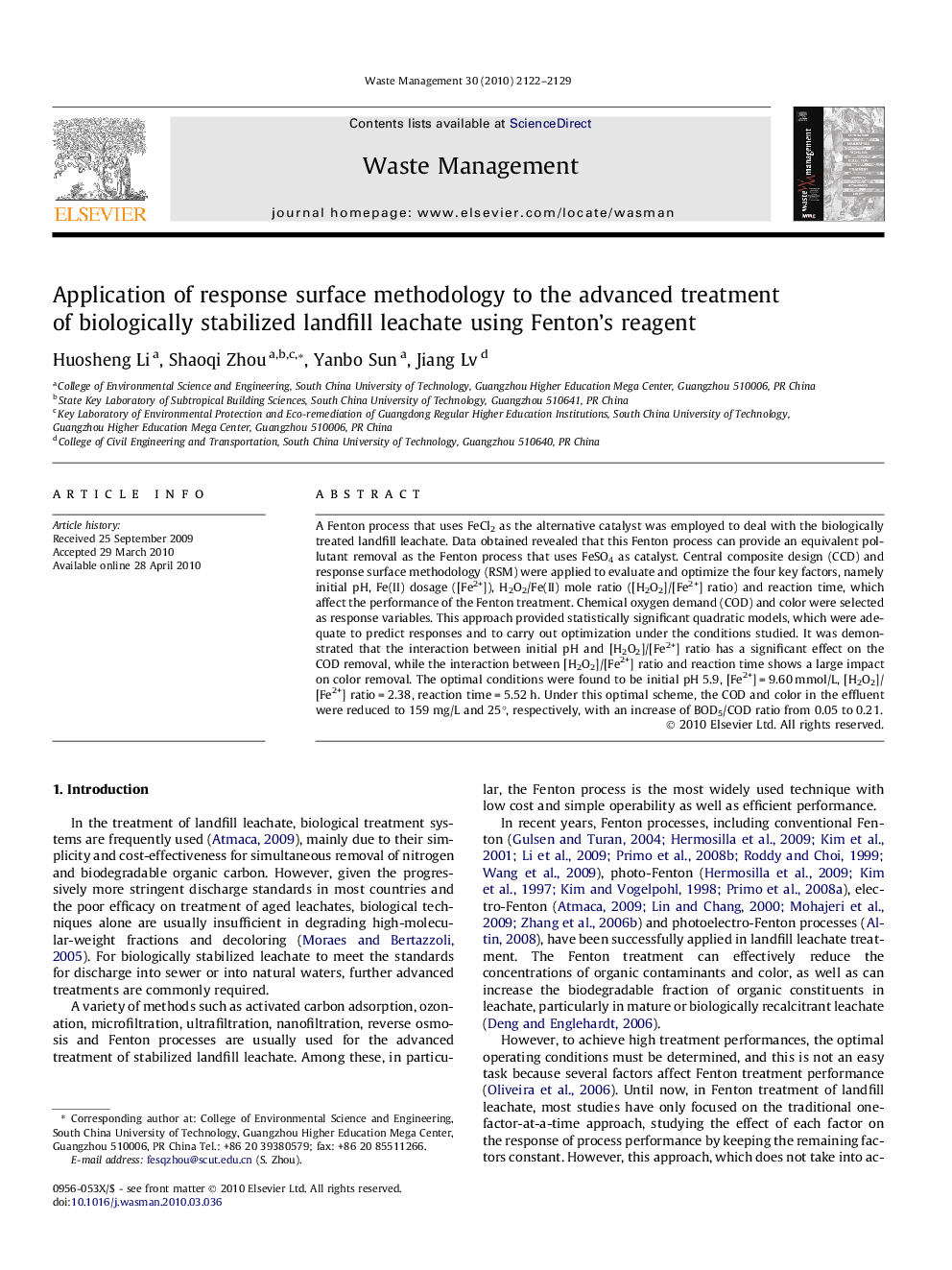| کد مقاله | کد نشریه | سال انتشار | مقاله انگلیسی | نسخه تمام متن |
|---|---|---|---|---|
| 4472641 | 1315074 | 2010 | 8 صفحه PDF | دانلود رایگان |

A Fenton process that uses FeCl2 as the alternative catalyst was employed to deal with the biologically treated landfill leachate. Data obtained revealed that this Fenton process can provide an equivalent pollutant removal as the Fenton process that uses FeSO4 as catalyst. Central composite design (CCD) and response surface methodology (RSM) were applied to evaluate and optimize the four key factors, namely initial pH, Fe(II) dosage ([Fe2+]), H2O2/Fe(II) mole ratio ([H2O2]/[Fe2+] ratio) and reaction time, which affect the performance of the Fenton treatment. Chemical oxygen demand (COD) and color were selected as response variables. This approach provided statistically significant quadratic models, which were adequate to predict responses and to carry out optimization under the conditions studied. It was demonstrated that the interaction between initial pH and [H2O2]/[Fe2+] ratio has a significant effect on the COD removal, while the interaction between [H2O2]/[Fe2+] ratio and reaction time shows a large impact on color removal. The optimal conditions were found to be initial pH 5.9, [Fe2+] = 9.60 mmol/L, [H2O2]/[Fe2+] ratio = 2.38, reaction time = 5.52 h. Under this optimal scheme, the COD and color in the effluent were reduced to 159 mg/L and 25°, respectively, with an increase of BOD5/COD ratio from 0.05 to 0.21.
Journal: Waste Management - Volume 30, Issue 11, November 2010, Pages 2122–2129